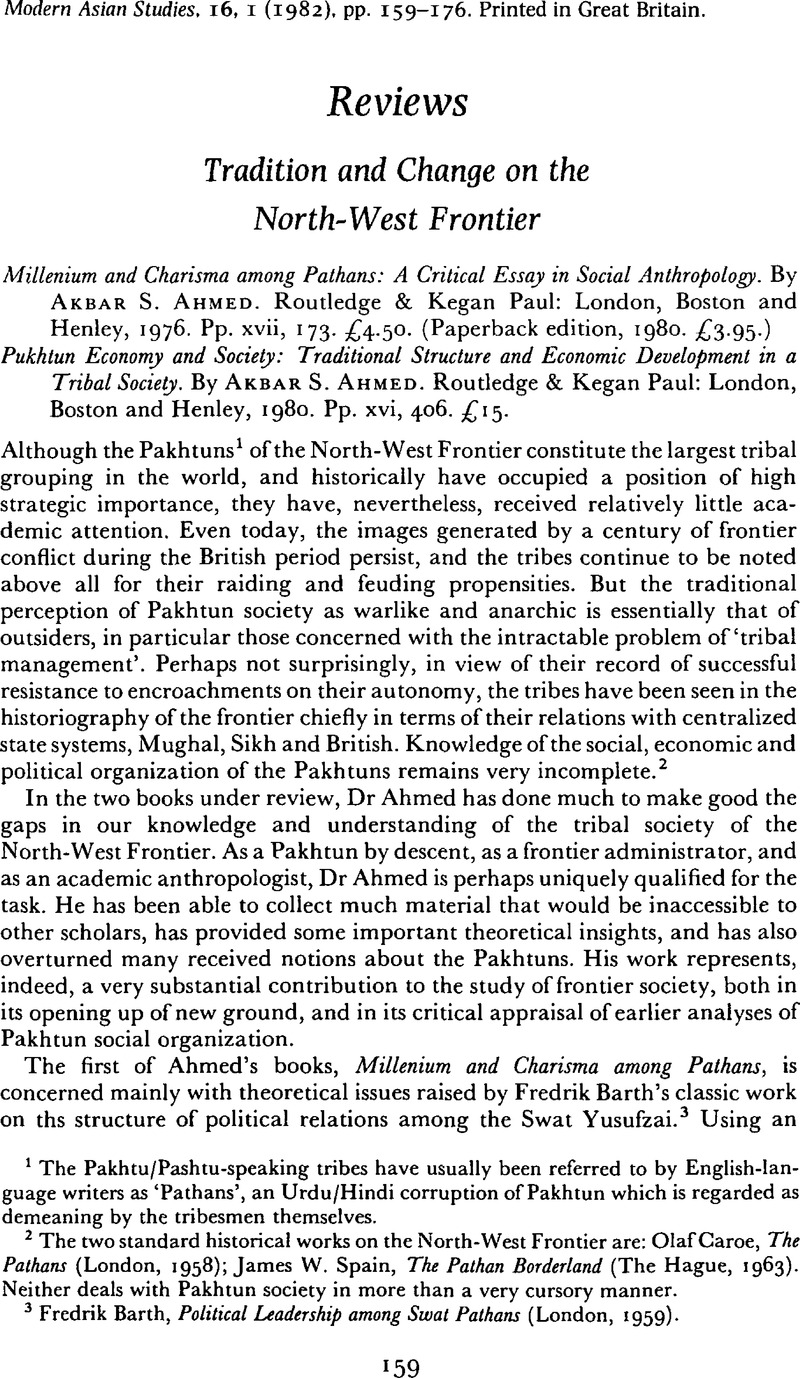Article contents
Tradition and Change on the North-West Frontier - Millenium and Charisma among Pathans: A Critical Essay in Social Anthropology. By Akbar S. Ahmed. Routledge & Kegan Paul: London, Boston and Henley, 1976. Pp. xvii, 173. £4.50. (Paperback edition, 1980. £3.95.) - Pukhtun Economy and Society: Traditional Structure and Economic Development in a Tribal Society. By Akbar S. Ahmed. Routledge & Kegan Paul: London, Boston and Henley, 1980. Pp. xvi, 406. £15.
Published online by Cambridge University Press: 28 November 2008
Abstract

- Type
- Reviews
- Information
- Copyright
- Copyright © Cambridge University Press 1982
References
1 The Pakhtu/Pashtu-speaking tribes have usually been referred to by English-language writers as ‘Pathans’, an Urdu/Hindi corruption of Pakhtun which is regarded as demeaning by the tribesmen themselves.
2 The two standard historical works on the North-West Frontier are: Caroe, Olaf, The Pathans (London, 1958);Google ScholarSpain, James W., The Pathan Borderland (The Hague, 1963).Google Scholar Neither deals with Pakhtun society in more than a very cursory manner.
3 Barth, Fredrik, Political Leadership among Swat Pathans (London, 1959).Google Scholar
4 Asad, Talal, ‘Market Model, Class Structure and Consent: A Reconsideration of Swat Political Organization’, Man, N.S. 7 (1972).Google Scholar
5 The best account of the emergence of Swat State is to be found in Maj. Hay, W. R., Monograph on Swat State (confidential) (Simla, 1933).Google Scholar
6 Ahmed overstates his case, however, when he argues that the Wali was ‘as near the definition of the Weberian charismatic leader as possible’ (pp. 13–14; also p. 115). The difficulty arises because Ahmed does not distinguish between the Weberian concept of charismatic leadership, and the concept of religious charisma which Weber borrowed and modified for his own purpose.
7 As Ahmed points out (pp. 50ff), Barth's use of the term ‘saint’ is very loose and misleading. Though ‘saint’ does not have the same meaning in Islam as in Christianity, nevertheless only those recognized as exceptionally devout are accorded the title.
8 The Mohmand came under the control of the Commissioner of the Peshawar Division in 1896, but did not have their own Agency during the British period. This was a source of grievance to the tribe, who saw it as evidence that they were not considered to be politically important.
9 See, e.g., Spain, , The Pathan Borderland, pp. 64–7.Google Scholar
10 Ahmed accepts that his material is inconclusive with regard to his central proposition; as he puts it (p. 356): ‘My thesis is…partly substantiated but partly disproved.’ A different formulation might have produced a much stronger argument.
- 2
- Cited by


